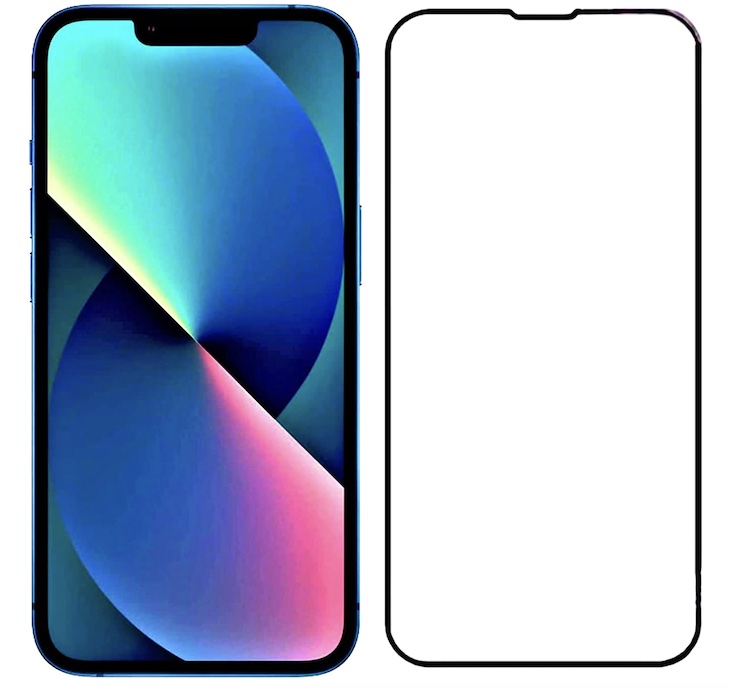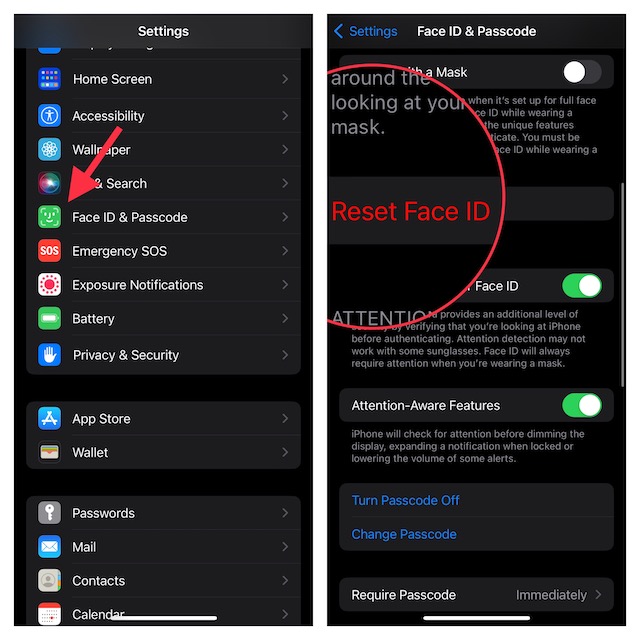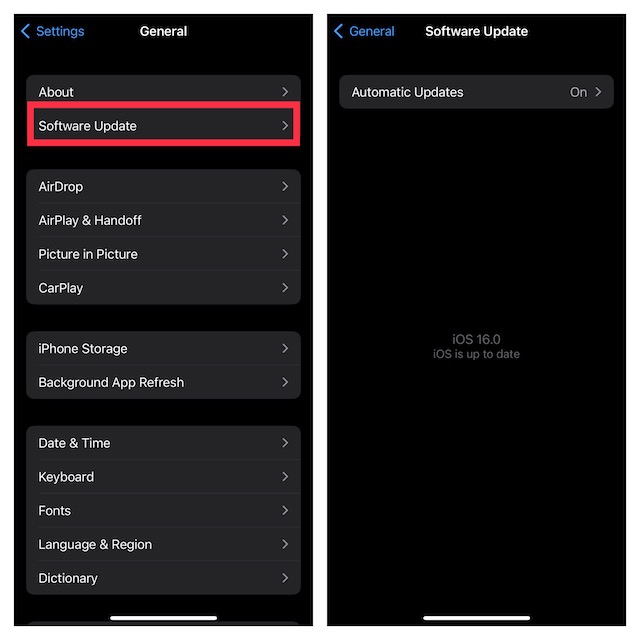Fix Face ID Not Working in Landscape Mode on iPhone in iOS 16 or Later
As always, we will first look into the possible causes that obstruct the Face ID in landscape mode. It will help us figure out the culprits.
Why Doesn’t Face ID Work in Landscape Mode on iPhone?
Without straightaway jumping the gun and blaming a software bug that is almost always at the flash point recently, you should first ensure whether or not your iPhone is onboard. Beyond incompatibility, you should keep in mind occasional glitches that tend to crop up every now and then. That’s not all, things like faulty screen guards and the pileup of dust that may have sneaked into the TrueDepth camera could also be hindering Face ID from functioning expectedly. Having taken these usual suspects into account, you should first look for basic troubleshooting tips to resolve the Face ID in landscape issues. And if all else fails to fix the problem, you should go for the kill and restore the device as new – of course as the last resort.
1. Ensure That Your iPhone is Compatible
If you were hoping that your older yet capable iPhone would get the Face ID in landscape feature, you would be completely disappointed to know that Apple has restricted this feature to iPhone 12 or later. Thus, if you have iPhone X, XS, or iPhone 11 Series, you can’t unlock your device in the landscape orientation. Here is the list of iPhone Models that support Face ID in landscape feature:
iPhone 13iPhone 13 mini iPhone 13 ProiPhone 13 Pro MaxiPhone 12iPhone 12 mini iPhone 12 Pro iPhone 12 Pro Max
Limiting exclusive features like Live Text in Video, the background removal tool, and Face ID In Landscape is a smart way to lure users to upgrade to the latest models, which Apple seems to have mastered of late.
2. Make Sure the Front Camera is Clean
Believe it or not, the pileup of dust, smudge, or dirt could also be behind this issue. So, use a soft cloth to gently clean the area around the front camera and then try to unlock the device to figure out whether or not the problem is gone.
3. Remove the Screen Protector
Though most screen protectors claim to fully support Face ID, very few are able to live up to the mark. Moreover, many screen guards even seem to come in the way when they get older. Let alone the cheap screen guards, even premium ones go through a stage where they become less responsive to touch, tap, and obstruct facial unlock. Therefore, remove the screen protector from your iPhone and then check if you have sorted out the issue. If the Face ID in landscape mode works, your screen guard, and not the iPhone is at fault!
4. Hard Reset Your iPhone
Hard reset is the sort of solution that often comes into the picture, especially when you are up against common issues. Credit where it’s due, this nifty troubleshooter has a good track record of sorting out common problems. So, we are not going to give it a miss.
Press and quickly release the volume up button. Then, press and release the volume down button.Next, hold down the side button until you see the Apple logo on the screen.
5. Reset Face ID
Times when Face ID seems to be misbehaving or feels sluggish, the one tip that has often rescued me is resetting the facial unlock. So, I’m going to count on this effective troubleshooter to resolve the issue.
Head over to the Settings app on your iPhone and tap Face ID & Passcode. Now, tap on Reset Face ID.
Next, set up the Face ID again, and then try unlocking your iPhone in the landscape orientation to check if you have gotten the better of the issue. If you have, rejoice!
6. Reset All Settings
When the basic tips do not work in fixing a problem, factory Reset becomes my go-to solution. Frankly speaking, it doesn’t let me down on many occasions.
Open the Settings app on your iPhone and tap on General. Scroll down and tap on Transfer or Reset iPhone. Then, tap Reset > Reset All Settings.
7. Update Software
If none of the tips has worked in fixing the Face ID not working in landscape mode, a software bug could be at the heart of the issue. Knowing that the most recent iOS updates come loaded with several bugs, it wouldn’t be wrong to put the sole blame on a hidden bug. The good thing is Apple doesn’t take long to spot an issue and come up with a quick fix. Therefore, updating the software could work in your favor.
Head over to the Settings app on your iPhone > General > Software Update.Next, allow your iPhone to check for software updates. Once it shows the available software update, download and install the latest version of iOS 16.
8. Last Resort: Restore Your iPhone As New
In most cases, you may not have to look for this radical measure. But most of us have been in situations where basic tips fail to work and we are forced to go for the last resort at some point or the other. So, I’m not surprised to know that nothing has resolved the issue. But bother not, restoring the iPhone as new will likely get rid of the issue. Bear in mind that it will wipe out the entire content and settings and install the latest stable version of iOS. Hence, do not forget to back up your iPhone beforehand.
Restore Your iPhone Via Computer
Connect your iPhone to a Mac or Windows PC and Launch iTunes/ Finder. Note that you will need to launch iTunes on your Windows PC and open Finder on Mac. Now, click Back Up Now to back up your device. Once the backup is complete, click Restore iPhone to restore the device as new.
Restore Your iPhone From Settings Itself
If you have sufficient iCloud storage to back up your iPhone, you can restore the device right from the Settings app without losing any important data.
Go to the Settings app -> your profile/Apple ID banner -> iCloud -> iCloud Backup. Now, back up your device. When the backup is complete, head over to the Settings app -> General -> Transfer or Reset iPhone -> Reset -> Erase All Content and Settings. Now, follow the setup Assistant to set up your iPhone. Along the way, Apple will offer you the option to restore the device from iCloud backup.
Note: Currently, iOS 16 is in beta which means restoring via iTunes/Finder will take you back to iOS 15. So, I would recommend you bide your time for a few days until Apple officially unleashes iOS 16 in mid-September.
Wrapping Up…
There you go! I guess you have resolved the Face ID not working in landscape mode problem. But before you set your eyes on any task or explore iOS 16 cool features like Lock Screen customization, lock photos with Face ID or use SharePlay in Messages, be sure to let us know the trick that has got the job done for you. And if you know any other tips that fix this issue as well, do not forget to shoot it via the comments section below.



